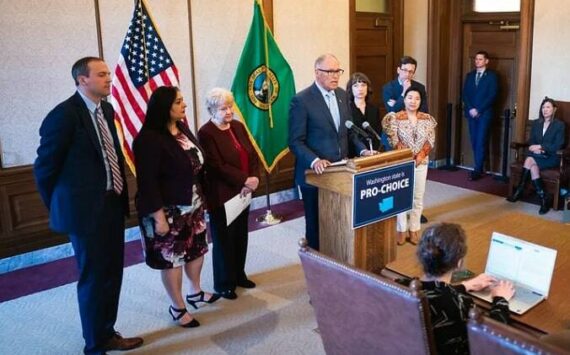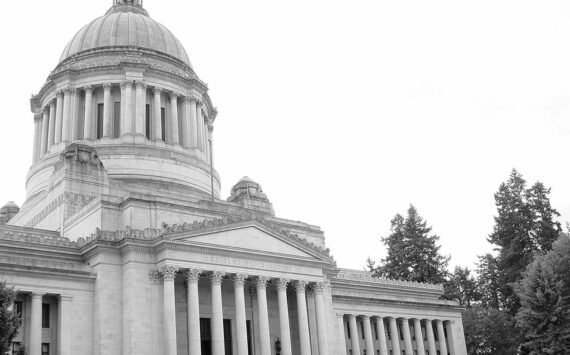OLYMPIA — In advance of Wednesday’s hearing on school funding, Washington Supreme Court justices had posed many questions that state attorneys told them couldn’t be answered yet.
Among them was what will it cost to pay “competitive market-rate” salaries to teachers, staff and administrators in every school district in the state.
That’s so difficult that state lawmakers are seeking professional help to figure out.
The answer and subsequent response by the Legislature are critical if lawmakers desire to get the state on the right side of the law again on education funding.
Washington’s Constitution makes clear it is the paramount duty of the state to pay the cost of a basic education for students in public schools.
The court ruled in 2012 that the state was failing to do so and set a 2018 deadline to remedy the situation. Justices later found the state in contempt and levied a $100,000-a-day fine when lawmakers didn’t turn in a plan showing their path to compliance.
Wednesday’s court hearing was ostensibly to get a progress report from lawmakers and then decide whether to zap the contempt order or impose harsher sanctions.
Thus far, the state has boosted funding to school districts to pay for things like books, supplies and bus transportation.
Paying employee salaries, the largest chunk of which is for classroom teachers, is the last big ticket item they are wrangling on. Right now, a bipartisan task force of House and Senate members is gathering data on how much money the state is spending on salaries and how much more it will need to spend to meet its paramount duty.
This is where the court’s question on “competitive market-rate” salaries comes in. It’s not enough for the state to give districts more money for salaries. It needs to examine the statewide pay scale, equalize teacher pay and consider the best means of recruiting and retaining instructors whether they work in Everett, Seattle, Walla Walla or Kettle Falls.
At a task force meeting Tuesday, consultants outlined two directions from which they are approaching these questions.
One will create a model for examining salaries of teachers in all districts taking into account variances in cost of living, rural versus urban and the demographics of a district’s student population.
This model also will factor in situations in districts that supplement teacher pay with local levy dollars. This enables veteran instructors to earn tens of thousands of dollars more per year than their peers in some other districts. Theoretically the state is going to have pick up the tab for those extra dollars and what’s unclear is if the salary schedule in those districts could become the state norm.
The consultant also will try to size up salaries of positions in public schools with those of like duties in the private sector.
That’s no problem for jobs such as custodians and secretaries. With school psychologists and social workers, one can make reasonable comparisons with professionals in private practice, too.
With teachers it gets trickier. Teachers don’t have an immediate corollary in the private sector, so consultants said they looked for professions in which job training and duties are generally similar.
Some lawmakers pushed back at their choices of comparing elementary teachers with registered nurses and secondary school instructors with accountants and auditors.
“I don’t on the face of it see a lot of similarities,” said Sen. John Braun, R-Centralia, who pointed out his wife is a nurse.
The consultant’s final report is due in November after which lawmakers will try to find common ground on the sum of money required for salaries and where it is going to come from. The Legislature is supposed to take votes in 2017 to put these final pieces of the McCleary puzzle in place.
That’s the message the state’s attorney sought to deliver Wednesday.
It’s probably not the answer every justice wanted to hear. So the question now is: How will the court respond?







